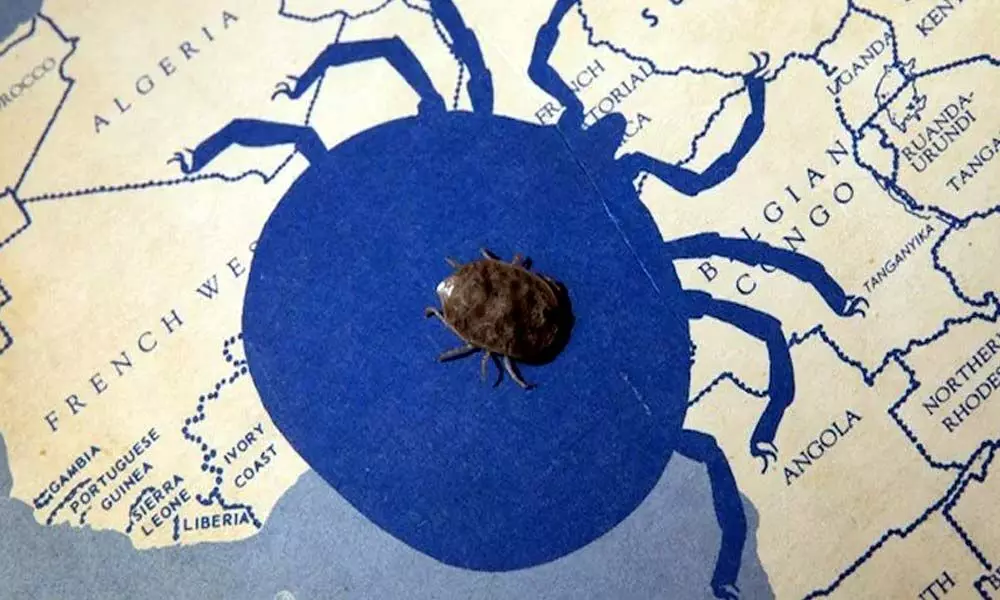Live
- Exhilarating ‘Benchmark’ of Venkat Changavalli
- Development activities worth `30 cr launched in Puthalapattu constituency
- Allegations against KTR baseless: BRS leader
- Megastar Chiranjeevi to Visit Allu Arjun’s Residence at 12 PM Today
- Nilima Rane: Trailblazer in Nursing
- Casual yet stylish office outfits for all-day comfort
- TTD to suspend all special darshans from January 10 to 19 amid Vaikuntha dwara darshans
- Naidu pats TDP leaders, cadres for enrolling 73L members
- Rupali Ganguly says for 20 years she never got an award
- Advanced anti-drone systems deployed for devotees’ safety at Mahakumbh
Just In
Research Shows That Ticks Can Survive Several Years Without Food

Hans News Service | 25 Feb 2022 6:45 PM IST

x
Research Shows That Ticks Can Survive Several Years Without Food
Highlights
- The Argas brumpti species of African tick is hard to beat when it comes to lifespan and surviving long periods of time without food
- Some of the arachnids were able to go for eight years without eating, which is remarkable even for a creature that has evolved to exist without much food.
The new research revealed that Argas brumpti species of African tick is hard to beat when it comes to lifespan and surviving long periods of time without food.
Some of these ticks have survived as long as 27 years in the lab, according to entomologist Julian Shepherd of Binghamton University in New York, who observed them over the course of 45 years. This is far longer than the average of 2-3 years for tick species in general.
Furthermore, some of the arachnids were able to go for eight years without eating, which is remarkable even for a creature that has evolved to exist without much food.
Finally, four years after the death of the last male tick in the group, one of the female ticks deposited eggs. This is most likely due to the female's ability to keep male sperm for far longer than is typical.
The researchers said that the long-term storage of viable sperm, which appears to be a record for any tick species.
Shepherd wrote in a new report describing his findings that the longevity of these ticks appears to be a record for any tick species.Shepherd received the ticks as a gift in 1976, and he set them up for observation in his lab at a constant temperature of 21 degrees Celsius (69.8 degrees Fahrenheit) and 81 percent relative humidity. That initial group's descendants are still living and reproducing.
The investigation into starvation began in 1984, when the food source including rabbits, mice, and rat blood ran out, and the final original male tick perished halfway through the eight-year fast.
He is constantly fascinated by species' adaptations to their surroundings, adds Shepherd. In this scenario, an arid environment with little availability to water for lengthy periods of time, as well as a lifestyle that requires long periods of time without nourishment between meetings with host animals.
Ticks of the species A. brumpti are large for ticks, measuring up to 20 millimetres (0.79 inches) in length. They used to linger out in burrows, dust baths, and termite mounds, seeking for other animals to eat, even people.
While they do bite humans, they are not known to transmit any diseases. These ticks have a soft, leathery skin instead of the hard plates present in more generally known tick species.
It's unclear whether the progeny of the original ticks will live as long as their parents; the younger ticks are already on their way to South Africa to assist with DNA studies.
According to his research into how species deal with such obstacles can help us understand how other organisms, including ourselves, deal with comparable challenges.

Next Story
More Stories
ADVERTISEMENT
© 2024 Hyderabad Media House Limited/The Hans India. All rights reserved. Powered by hocalwire.com






